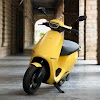You have probably noticed that your electronics will get progressively warmer the longer you use them at any one time. Some devices even have cooling mechanisms or fans inside to keep from overheating. But why do flash drives get hot?
Flash drives get hot through consistent and heavy use, due to its metal components heating up, and because of a failure of the drive or host device.
It’s not unusual for a USB drive to get a little warm with use, whether a few minutes or hours. In fact, it’s scientifically expected. USB drives are used to store and transfer information between itself and the host device (i.e. your computer). The constant transfer between the two causes the heat up as it takes energy to move data. Through repetitive use, excess energy is used and transformed into heat.
Metal is also much better at absorbing heat than most other components that make up a flash drive. As you can imagine, metal USB drives often become warmer than plastic or wood drives. The metal body should never become too hot to handle.
A few things can, however, cause a USB to overheat and potentially cause harm. A properly working drive should not overheat, but if the port it is connected to is defective, then it could be receiving too much power. Excess power, as noted above, is transferred into heat and could potentially burn you or the drive. This is especially true with the metallic connector, so take care.
Also, if your drive is getting too hot, then it’s also possible that an interior component has failed and too much electricity is passing through the USB.
If your drive is hot enough to burn you, carefully remove it from the computer using a thick piece of cloth or potholders. Let it cool down and test the port with another drive. If it heats up as well, then you likely have a defective USB port. If not, then you can be sure the fault lies with the too-hot drive.
Learn about broken flash drive data recovery here and how to recover data from a broken or corrupted USB drive here.
It’s important to keep your USB drive at a moderate temperature because its interior components are extremely susceptible to temperature. The memory and controller chips within can degrade and become completely corrupted if they’re exposed to excess humidity and temperatures (either too hot or too cold). Prolonged exposure to heat especially will kill off your drive very quickly. Avoid leaving your drive in variable environments like your car or outside.





0 Comments